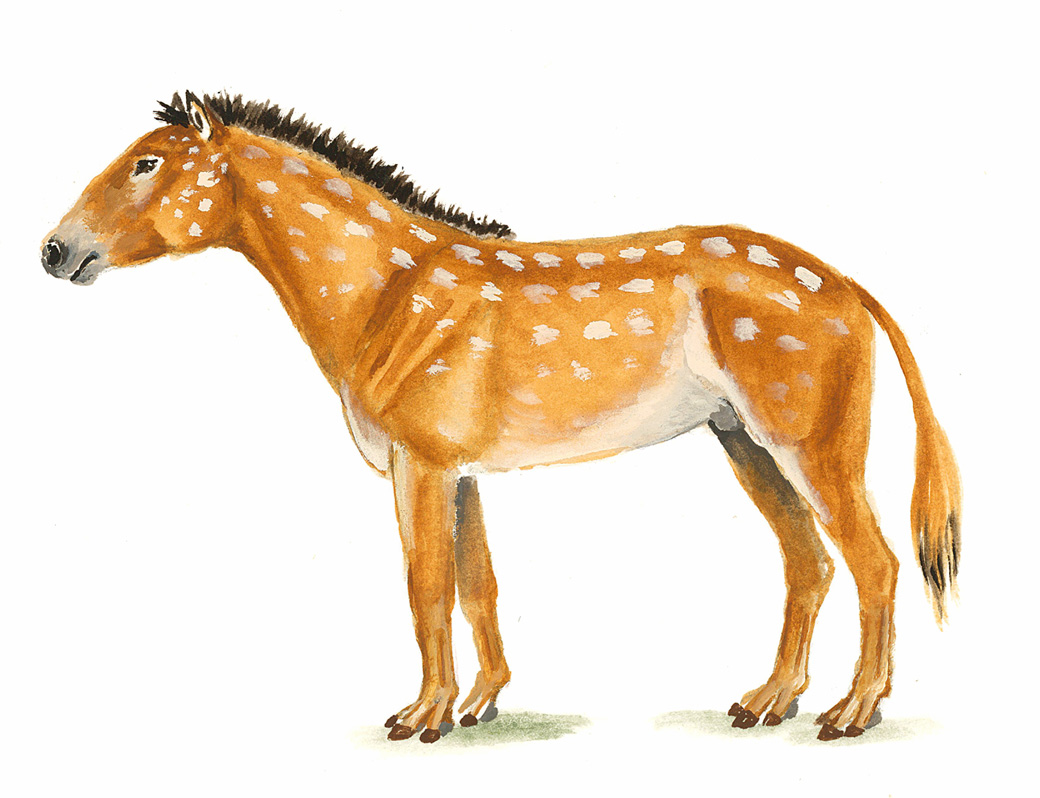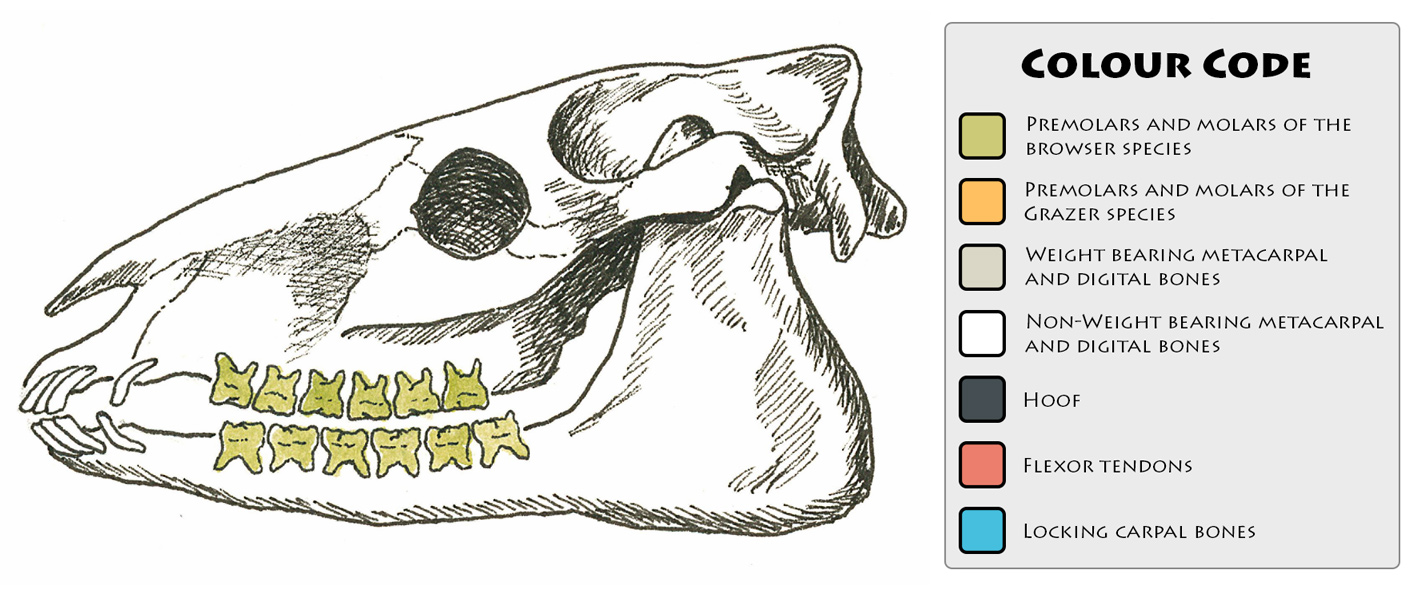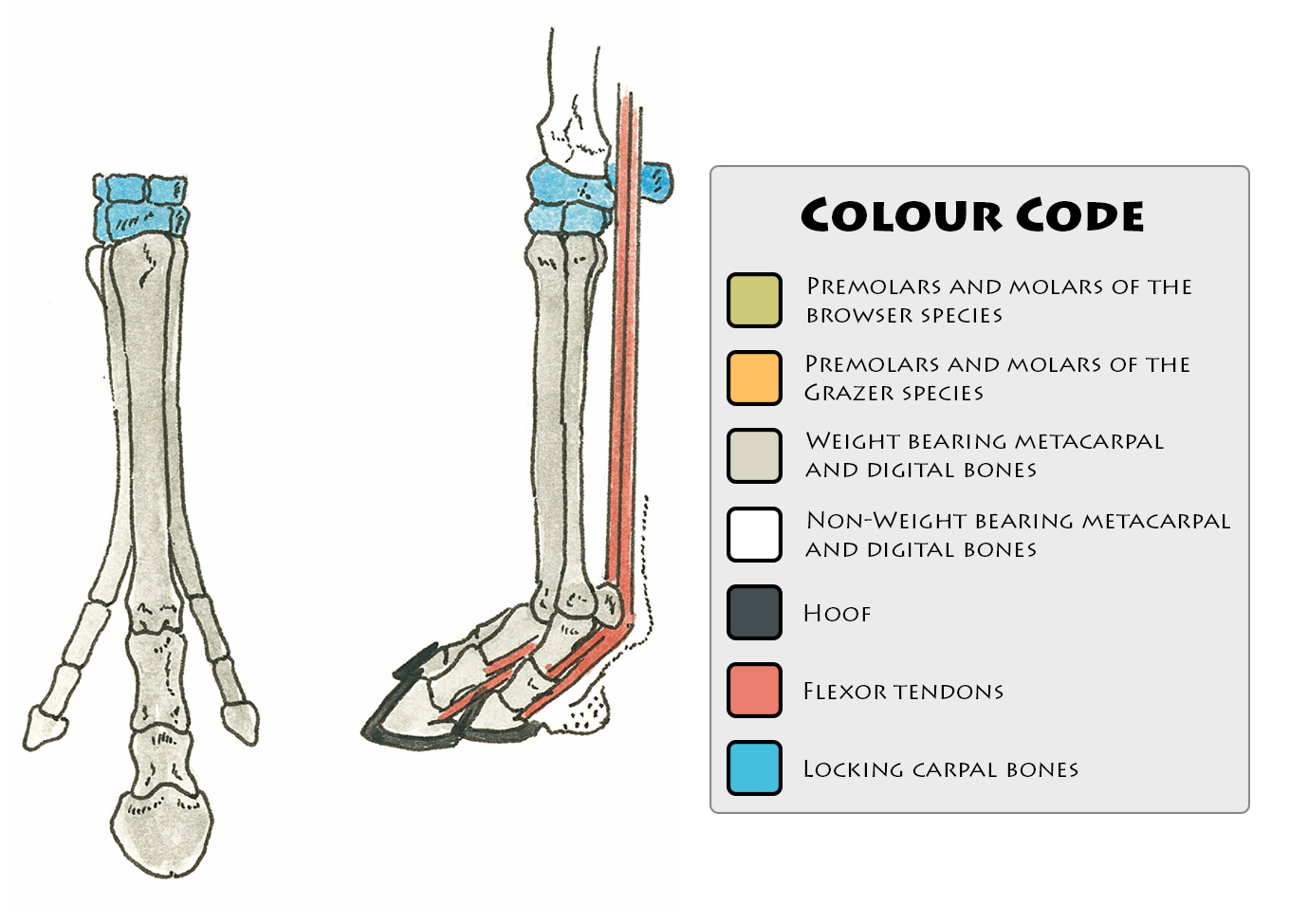 Name: Miohippus
Name: Miohippus  Name: Miohippus
Name: Miohippus Miohippus is an important link in the horse family as this species led to great diversity in the subsequent family members with numerous and distinct types of horses, although only one genus survives today.
 During the late Eocene, around 37 million years ago, new types of horses began to appear in North America, Haplohippus, Mesohippus and Miohippus. Large numbers of Miohippus fossils from the Oligocene period were found in South Dakota and nearby and spread from western Texas, Florida and Oregon to the north including the Great Plains of what is now the U.S. and Canada.
During the late Eocene, around 37 million years ago, new types of horses began to appear in North America, Haplohippus, Mesohippus and Miohippus. Large numbers of Miohippus fossils from the Oligocene period were found in South Dakota and nearby and spread from western Texas, Florida and Oregon to the north including the Great Plains of what is now the U.S. and Canada.
Miohippus was now closer to the “horse-like” features of today.  They had lost the fifth digit in the front foot, so they only had three toes on the front and the hind feet. The fleshy pads of the digits 2 and 4 partially supported weight. There was variation in the size but they were about 2 ½ feet tall and probably weighed about 55 kg (120 lbs). This horse now had a longer muzzle and a larger gap just before the chewing teeth. They also had a depression, called a facial fossa, on the skull just in front of the eyes. These are not found in modern horses and we don’t really understand the purpose of these depressions.
They had lost the fifth digit in the front foot, so they only had three toes on the front and the hind feet. The fleshy pads of the digits 2 and 4 partially supported weight. There was variation in the size but they were about 2 ½ feet tall and probably weighed about 55 kg (120 lbs). This horse now had a longer muzzle and a larger gap just before the chewing teeth. They also had a depression, called a facial fossa, on the skull just in front of the eyes. These are not found in modern horses and we don’t really understand the purpose of these depressions.
The teeth were changing as well. The incisors were larger and the uppers had “cup-like” depressions, which are found in all horses from this time forward. The ridge height was higher and this would increase chewing efficiency. Mesohippus and Miohippus probably lived alongside each other 34 to 39 million years ago.